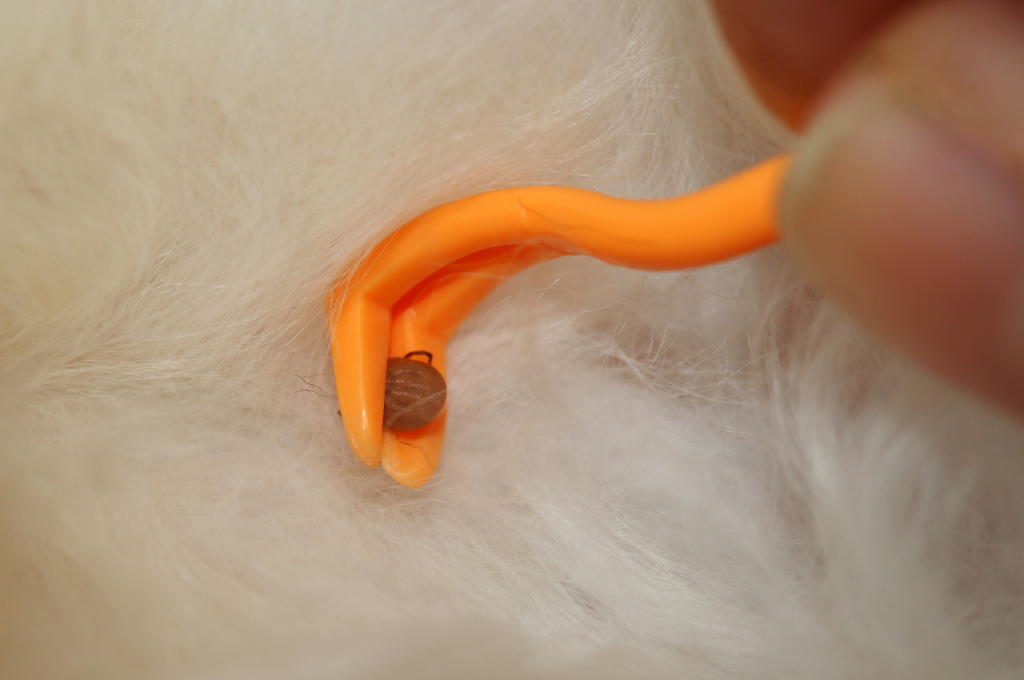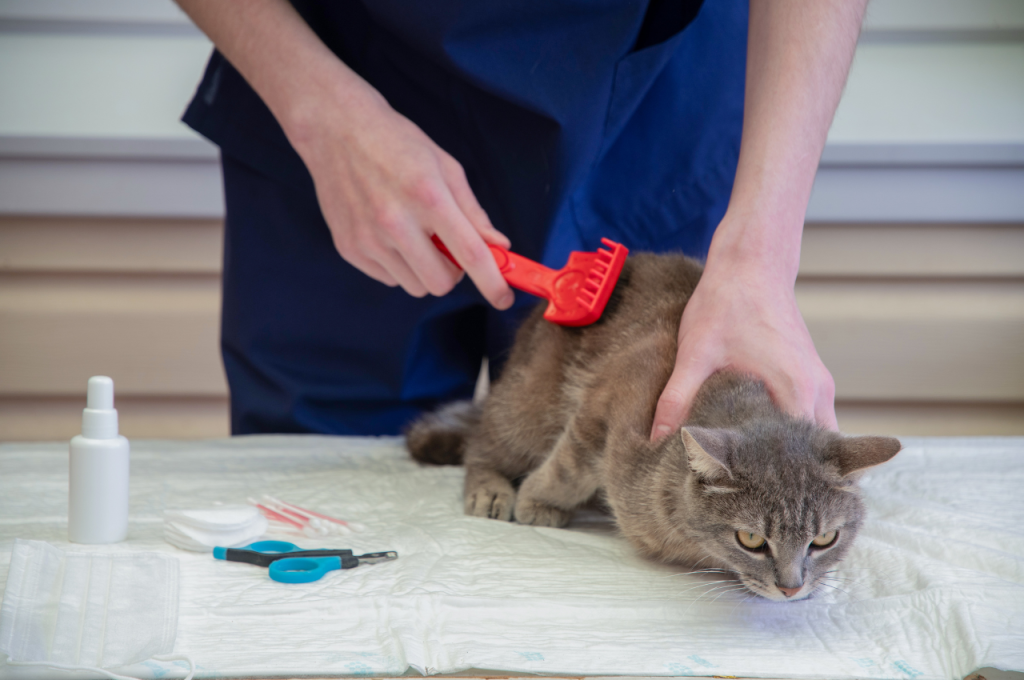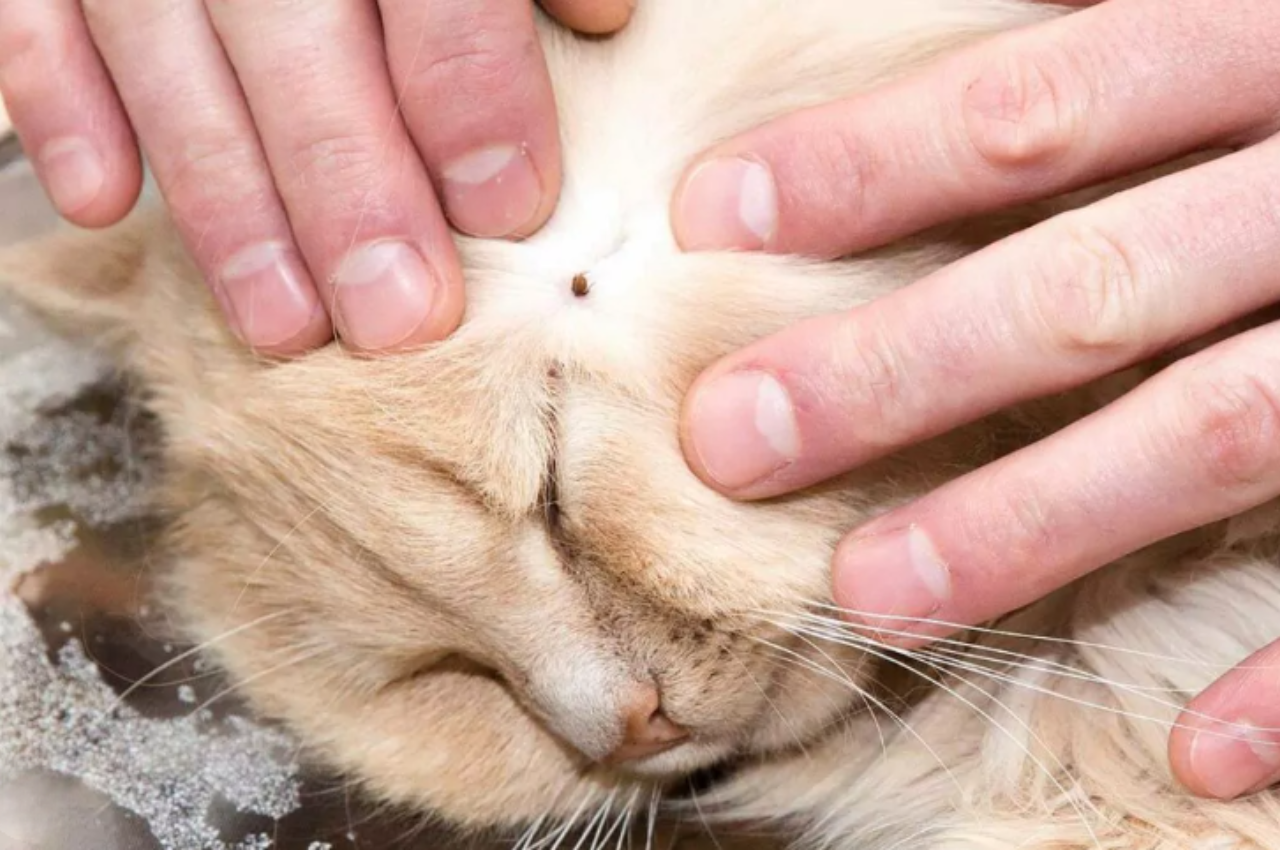To remove a tick from a cat, use fine-tipped tweezers to grasp the tick close to the skin. Pull it out gently in a steady motion without twisting or jerking.
Tick removal is crucial to prevent tick-borne diseases that can harm your cat’s health. Ticks can transmit various illnesses, so prompt removal is key. Always check your cat for ticks, especially after outdoor activities. Regular grooming and tick prevention measures are essential for your cat’s well-being. By following proper tick removal techniques, you can keep your feline friend safe and healthy.
Introduction to Tick Removal In Cats
Removing a tick from a cat is a delicate process that requires patience and precision. Begin by using fine-tipped tweezers to grasp the tick as close to the skin as possible and pull it straight out with steady pressure. It’s important to avoid twisting or jerking the tick to prevent leaving its mouthparts behind.

Ticks are a common problem for pet owners, especially for cats who love to roam around the outdoors. Ticks can cause various health issues to your feline friend, including tick-borne diseases, anemia, skin irritation, and even paralysis. Therefore, it is crucial to remove ticks from your cat’s body as soon as possible. However, removing ticks from cats can be a challenging task, and if not done correctly, it can also harm your cat. In this blog, we will discuss the importance of prompt tick removal from cats and understanding tick-borne diseases in felines.
Why Prompt Tick Removal is Crucial
Removing ticks from your cat’s body as soon as you spot them is essential to prevent various tick-borne diseases that can be transmitted from ticks to cats. Ticks can transmit diseases such as Lyme disease, Ehrlichiosis, Anaplasmosis, and Babesiosis. These diseases can cause severe health issues such as fever, joint pain, lethargy, and even death in some cases. Therefore, it is crucial to remove ticks from your cat’s body as soon as you spot them.
Understanding Tick-borne Diseases in Felines
Ticks can transmit various diseases to cats, and it is crucial to understand these diseases to take the necessary precautions. Lyme disease is the most common tick-borne disease in cats, which can cause fever, lethargy, and loss of appetite. Ehrlichiosis is another tick-borne disease that can cause symptoms such as fever, lethargy, and anemia. Anaplasmosis can cause fever, joint pain, and lethargy in cats. Babesiosis is a severe tick-borne disease that can cause anemia, fever, and even death in some cases. Therefore, it is crucial to keep your cat protected from ticks and remove them as soon as you spot them.
Prompt tick removal from cats is crucial to prevent various tick-borne diseases that can cause severe health issues to your feline friend. Understanding tick-borne diseases in felines can help you take the necessary precautions and keep your cat protected from ticks.
Identifying a Tick on Your Cat
When it comes to keeping your furry feline friend safe and healthy, it’s essential to be able to identify and remove ticks promptly. Ticks can pose serious health risks to cats, including the transmission of diseases. By knowing how to identify ticks and where to look for them, you can take proactive measures to protect your cat. In this section, we will provide you with visual inspection tips and common tick-harboring spots on your cat.
Visual Inspection Tips
Performing regular visual inspections of your cat’s fur can help you detect ticks early on. Here are some tips to guide you:
- Find a quiet and well-lit area to examine your cat.
- Gently run your hands over your cat’s body, feeling for any unusual bumps or lumps.
- Pay close attention to areas where ticks are most likely to hide, such as the head, neck, ears, armpits, and groin.
- Look for small, dark, and rounded shapes attached to your cat’s skin. Ticks can range in size from a pinhead to a small grape.
- Use a magnifying glass if necessary to get a closer look.
Remember, ticks can be sneaky and easily go unnoticed, so it’s essential to be thorough in your examination.
Common Tick-harboring Spots
Ticks tend to seek out warm and protected areas on your cat’s body. Knowing their preferred spots will help you target your inspection. Here are some common tick-harboring spots to check:
| Common Tick-Harboring Spots | Visual Characteristics |
| Head and Neck | Beneath the chin, around the ears, and along the hairline. |
| Ears | Inside the earflaps and around the base of the ears. |
| Armpits | Check the area where the front legs meet the body. |
| Groin | Inspect the area around the genitalia and the inner thighs. |
By focusing on these common areas, you increase your chances of finding any ticks that may be hiding on your cat.
Materials You’ll Need for Safe Tick Removal
To safely remove a tick from a cat, gather fine-tipped tweezers, rubbing alcohol, and gloves. Place the tweezers near the tick’s head, grasp firmly, and pull straight out. Disinfect the area and monitor your cat for any signs of infection.

Removing ticks from your furry friend can be a daunting task, but with the right materials and a little bit of patience, you can safely and effectively remove ticks from your cat. Before you begin, make sure you have all the necessary materials on hand. Here are the materials you’ll need for safe tick removal.
Choosing The Right Tick Removal Tools
When it comes to removing ticks from your cat, having the right tools is essential. Here are the tools you’ll need:
- Tick removal tool
- Fine-tipped tweezers
- Latex gloves
A tick removal tool is specially designed to remove ticks from pets without leaving the mouthparts behind. Fine-tipped tweezers can also be used to remove ticks, but they require a bit more skill and patience. Latex gloves are important to protect yourself from any potential diseases the tick may be carrying.
Additional Supplies for Aftercare
After removing the tick, it’s important to take care of your cat’s skin and monitor them for any signs of tick-borne illnesses. Here are some additional supplies you may need:
- Antiseptic wipes or spray
- Small dish or container
- Magnifying glass
Antiseptic wipes or spray can be used to clean the area where the tick was removed to prevent infection. A small dish or container can be used to store the tick in case it needs to be tested for disease. A magnifying glass can be used to inspect your cat’s skin for any remaining ticks or bite marks.
In conclusion, having the right materials is essential for safe and effective tick removal from your cat. Make sure you have all the necessary tools and supplies on hand before you begin, and don’t hesitate to seek veterinary care if you’re unsure about the removal process or if your cat shows any signs of illness.
Pre-removal Preparations
Before removing a tick from your cat, it’s crucial to make the necessary preparations to ensure a smooth and safe process. Pre-removal preparations involve calming your cat for the procedure and sanitizing your tools and workspace.
Calming Your Cat for The Procedure
Create a calm environment for your cat by choosing a quiet and comfortable space. Speak softly and provide gentle strokes to help relax your feline friend. Consider using a towel to gently wrap your cat, ensuring minimal movement during the tick removal process.
Sanitizing Your Tools and Workspace
Prepare a clean and well-lit area for the tick removal procedure. Gather the necessary tools, such as fine-tipped tweezers or a tick removal tool, and ensure they are sanitized using rubbing alcohol. Wear gloves to protect yourself and prevent the spread of any potential infections.
Step-by-step Tick Removal Process
To remove a tick from a cat, follow these steps: First, wear gloves to protect yourself. Next, use fine-tipped tweezers to grasp the tick close to the skin. Then, pull upward with steady, even pressure. After removing the tick, clean the bite area and your hands with rubbing alcohol or soap and water. Finally, dispose of the tick by placing it in alcohol, sealing it in a bag, wrapping it tightly in tape, or flushing it down the toilet.
Grasping The Tick With Tweezers
tweezers to grasp the tick as close to your cat’s skin as possible.
Gentle Pulling Technique
pull the tick straight out without twisting or jerking to prevent leaving any parts behind.
Ensuring Complete Removal
Antiseptic and disposing of the tick properly to prevent reattachment.
Post-removal Care
After removing a tick from your cat, it’s crucial to provide proper post-removal care to ensure your feline friend’s well-being. Here are the essential steps to follow for post-removal care:
Disinfecting The Bite Area
To prevent infection, gently clean the bite area with mild soap and water. Avoid using alcohol or peroxide as they can sting and irritate the area, potentially causing discomfort to your cat.
Safely Disposing of The Tick
After removing the tick, dispose of it safely. Place the tick in a small container with rubbing alcohol to kill it, or flush it down the toilet. Avoid crushing the tick with your fingers as this can potentially expose you to tick-borne diseases.
Monitoring The Cat for Symptoms
Keep a close eye on your cat for the next few weeks. Look out for any signs of redness, swelling, or irritation around the bite area. Monitor for symptoms such as fever, lethargy, or loss of appetite, which could indicate a possible infection or tick-borne illness.
When to Seek Veterinary Assistance
When learning how to remove a tick from a cat, seek veterinary assistance if the tick is deeply embedded, your cat shows signs of illness, or you are unsure about the removal process to ensure safe and effective treatment.

Signs of Tick-borne Illness
If your cat displays any of the following signs after a tick bite, it is essential to seek veterinary assistance:
- Weakness or lethargy
- Loss of appetite
- Fever
- Joint swelling
Complications From Improper Removal
Improper removal of a tick can lead to various complications, including:
- Increased risk of infection
- Retained mouthparts causing irritation
- Transmission of tick-borne diseases
Conclusion
Knowing how to remove a tick from your cat is essential for their health and well-being. By following the proper steps, such as using tweezers, avoiding squeezing the tick, and cleaning the area afterward, you can effectively remove the tick without causing harm to your feline friend.
Remember to monitor your cat for any signs of illness and consult a veterinarian if necessary. By being proactive and knowledgeable, you can ensure the safety and comfort of your beloved pet.
